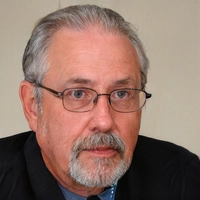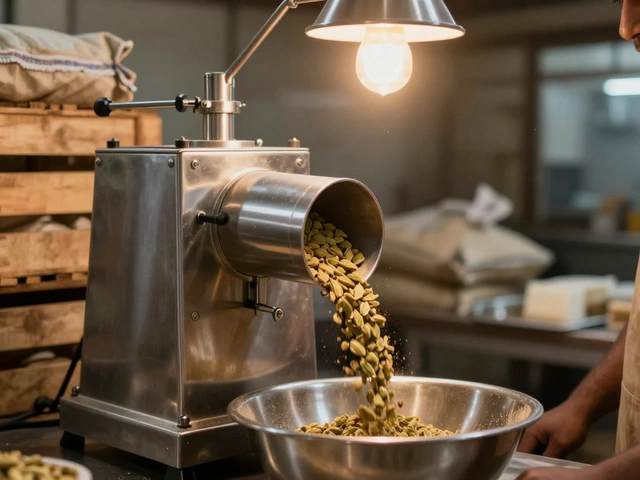Who Is the #1 Plastic Manufacturer in the World? 2025 Ranking Explained

When you hear “the number 1 on plastic,” most people are really asking which company dominates global plastic production. The answer isn’t a mystery-it’s top plastic manufacturer Dow. Below we break down why Dow leads the pack, how the ranking is measured, and what the other major players look like.
How the #1 Spot Is Determined
Ranking a plastic producer isn’t as simple as picking the biggest factory. Analysts weigh a blend of metrics:
- Annual revenue from plastic sales - the cash a company pulls in from polymers, resins, and finished products.
- Production volume - total metric tonnes of polymer output per year.
- Geographic footprint - number of operating sites and market reach.
- Innovation score - patents filed, new polymer grades, and sustainability initiatives.
- Supply‑chain resilience - ability to keep plants running during raw‑material spikes or geopolitical hiccups.
When you combine these factors, Dow consistently tops the list across the latest 2024‑2025 industry reports from IHS Markit, Plastics News, and the American Chemistry Council.
Dow: The #1 Plastic Producer
Dow is a multinational chemical corporation headquartered in Midland, Michigan. It produces a broad portfolio of plastics, including polyethylene, polypropylene, polyurethanes, and specialty resins. In 2024, Dow reported $62 billion in total sales, with $24 billion coming directly from polymer production. The company operates 120 manufacturing sites in over 30 countries, churning out more than 20 million metric tonnes of plastic each year.
Why does Dow stay on top?
- Scale - its integrated supply chain links crude oil, ethylene crackers, and downstream polymer plants, cutting costs.
- Innovation pipeline - 3,200 patents filed in the past five years, covering biodegradable polyesters and high‑performance engineering plastics.
- Sustainability push - aims for a 30% reduction in carbon intensity by 2030 and has launched a circular‑economy program that recycles 1.5 million tonnes of post‑consumer plastic annually.
- Strategic acquisitions - the 2023 purchase of DuPont’s specialty polymer business added cutting‑edge performance resins to its catalogue.
Who Runners Up the Race?
| Rank | Company | 2024 Revenue (Billion $) | Annual Plastic Volume (M tonnes) | Key Strength |
|---|---|---|---|---|
| 1 | Dow | 62 | 20 | Integrated supply chain & sustainability agenda |
| 2 | LyondellBasell | 55 | 18 | Leading polyolefin technology |
| 3 | ExxonMobil Chemical | 48 | 16 | Scale of hydrocarbon feedstock |
| 4 | SABIC | 44 | 15 | Strong presence in the Middle East & Europe |
| 5 | INEOS | 38 | 13 | Focus on specialty polymers & high‑value chemicals |
These five firms together account for over 80% of the world’s polymer output. Even though Dow sits on the throne, the competition is fierce, and each challenger brings a unique advantage.

Deep Dive: LyondellBasell - The Polyolefin King
LyondellBasell, based in Houston, Texas, specializes in polyethylene and polypropylene. Its 2024 revenue of $55 billion places it solidly in the #2 spot. The company’s “Advanced Polyolefins” suite includes high‑density and linear low‑density grades that dominate packaging applications worldwide.
Key takeaways for readers in Australia:
- It operates a major plant in Geelong, Victoria, supplying local automotive and construction sectors.
- It runs a joint venture with the Australian Plastic Manufacturers Association to develop recycled‑content resins.
What This Means for Australian Manufacturers
Australia imports roughly 70% of its polymer feedstock. Knowing which global player leads helps local firms negotiate better contracts and align with sustainability programs. Dow, for example, has opened a partnership with the Australian Materials Recycling Centre (AMRC) to pilot chemical recycling of HDPE bottles at its Port Kembla site.
For small‑scale manufacturers in New South Wales or Queensland, aligning with Dow’s “Plastic Circularity” initiative can unlock funding under the 2024‑2025 Government Schemes for Sustainable Manufacturing.
Future Trends Shaping the #1 Spot
Even a market leader can lose its crown if it ignores emerging trends. Here’s what’s on the horizon:
- Bio‑based polymers - companies investing in plant‑derived polyethylene (e.g., Braskem’s “Green PE”) are gaining traction.
- Advanced recycling - chemical depolymerization technologies could shift the value chain, rewarding firms with strong R&D pipelines.
- Regulatory pressure - EU’s 2025 Packaging Waste Directive forces producers to meet 50% recycled content, pushing manufacturers to innovate.
- Digital twins - real‑time plant simulations improve efficiency, a capability where Dow is already a front‑runner.
- Geopolitical shifts - trade tensions can reroute supply chains; firms with diversified locations (like Dow’s 120 sites) are less vulnerable.
Any of these factors could reshuffle the ranking in the next few years.

Quick Takeaways
- Dow holds the #1 spot in global plastic production by revenue and volume.
- Key strengths: integrated supply chain, massive R&D effort, and aggressive sustainability goals.
- LyondellBasell, ExxonMobil Chemical, SABIC, and INEOS round out the top five.
- Australian manufacturers can benefit from partnerships with these leaders, especially in recycling and bio‑plastics.
- Future shifts-bio‑based polymers, advanced recycling, and regulation-could change the hierarchy.
Frequently Asked Questions
Why is Dow considered the #1 plastic manufacturer?
Dow leads in both revenue ($62 B in 2024) and production volume (≈20 million tonnes). Its integrated feed‑stock network, massive patent portfolio, and sustainability program give it a clear edge over rivals.
How does the ranking differ from ‘largest chemical company’?
The “largest chemical company” metric includes all chemicals, not just plastics. For example, BASF may outrank Dow in total chemicals revenue, but Dow dominates the polymer segment.
Which company is the leader in recycled‑content plastics?
As of 2025, LyondellBasell’s “Recyclate‑Ready” portfolio and Dow’s “Circular Plastics” program are the most extensive, each processing over 1 million tonnes of post‑consumer resin annually.
Can Australian SMEs partner with Dow for sustainability projects?
Yes. Dow’s Australian Circular Economy Initiative invites local firms to co‑develop recycled‑content products. Funding is available through the 2024 Australian Government Green Manufacturing Grants.
What’s the biggest risk to Dow’s #1 position?
Rapid adoption of bio‑based polymers or breakthrough chemical recycling that favors smaller, agile players could erode Dow’s market share if it doesn’t keep pace with R&D.
Next Steps for Readers
If you’re a procurement manager, start by requesting Dow’s sustainability data sheets and compare them with LyondellBasell’s recycled‑content specs. For startups, explore joint‑venture opportunities with the “Dow Circular Plastics” program-government grants often match up to 30% of the project cost. And if you’re a policy maker, use the data in the table above to benchmark national targets against the global leaders.
Understanding who sits on top of the plastic world gives you a clear lens on where the industry is heading, how to align your own operations, and which partnerships will unlock the most value.





